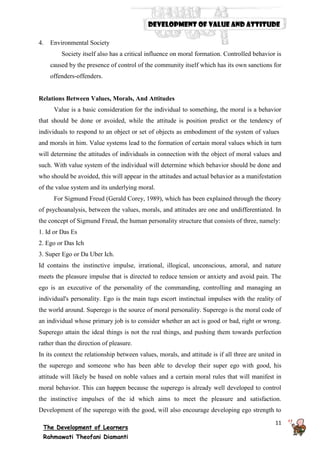The document discusses the development of values and attitudes in adolescence. It begins by outlining some key changes that occur during adolescence, including physical, intellectual, emotional, social, and moral changes. It then discusses several approaches to values education, including inculcation, cognitive moral development, values analysis, values clarification, and action learning. The document also notes that there are individual differences in how adolescents develop values and attitudes based on factors like culture and cognitive development. Finally, it recommends efforts to develop values and attitudes in adolescents, such as creating open communication and a harmonious environment.













